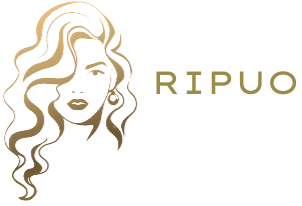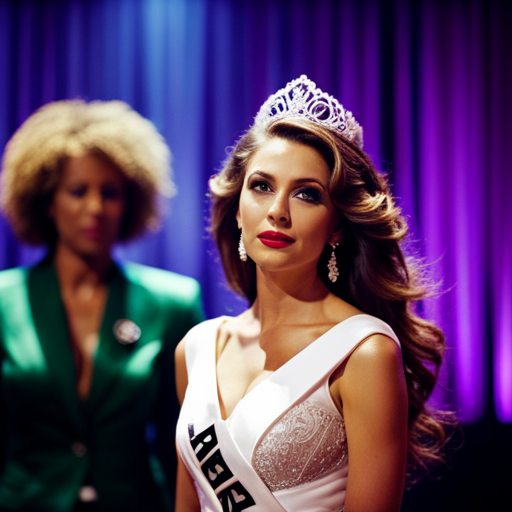Tips for Effective On-Stage Question and Answer Sessions

As the spotlight shines and the audience eagerly awaits, the art of mastering on-stage question and answer sessions becomes paramount.
In this article, we will explore essential tips to navigate Q&A sessions with finesse and confidence.
From preparing for potential curveball questions to engaging with the audience and leveraging body language, these strategies will equip you to navigate the challenges of on-stage Q&A sessions with poise and professionalism.
Preparing for Q&A Success
To ensure a successful Q&A session, speakers must thoroughly prepare for potential questions and anticipate audience concerns. Speaker preparation is key to fostering audience participation and creating a meaningful dialogue during the session.
Before stepping onto the stage, speakers should familiarize themselves with the topic at hand and consider various angles from which the audience may approach it. This preparation allows speakers to anticipate potential questions and formulate thoughtful, well-informed responses. Additionally, speakers should be well-versed in the subject matter, providing them with the confidence to address a wide array of inquiries.
Understanding the audience demographic is also crucial in tailoring responses to resonate with attendees. By acknowledging and incorporating the concerns of the audience, speakers can foster a more engaging and interactive environment.
Moreover, it’s essential for speakers to remain open-minded during the Q&A session, welcoming diverse perspectives and encouraging active participation.
Handling Tough Questions
Preparing for Q&A success involves anticipating challenging inquiries and formulating strategic approaches for addressing them with confidence and expertise. Managing challenging questions during on-stage Q&A sessions requires a combination of preparation and composure.
When faced with tough questions, it is essential to stay composed and avoid becoming defensive or flustered. One effective strategy is to rephrase the question to ensure a clear understanding of the inquiry. This not only allows for clarification but also provides a moment for gathering thoughts and formulating a well-structured response.
It’s also crucial to acknowledge the difficulty of the question and demonstrate a willingness to engage with it thoughtfully. Maintaining composure is imperative, as it conveys professionalism and confidence to the audience. Additionally, refraining from evasive or dismissive responses and instead offering honest, respectful answers can help in managing tough questions effectively.
Engaging With the Audience
To create a dynamic and engaging on-stage question and answer session, it’s essential to master audience interaction techniques.
This involves fostering a connection with the audience through the art of asking thought-provoking questions.
Audience Interaction Techniques
Engage the audience effectively by employing interactive techniques that encourage active participation and foster effective communication during on-stage question and answer sessions.
Encouraging audience members to participate actively can be achieved through various methods, such as asking open-ended questions, conducting live polls, or initiating small group discussions. This not only keeps the audience engaged but also creates a dynamic exchange of ideas, allowing for a more enriching experience for everyone involved.
Effective communication can also be facilitated by using visual aids, such as slides or videos, to illustrate key points and engage the audience on multiple sensory levels. By incorporating these techniques, speakers can create an environment that encourages audience members to engage actively and contribute meaningfully to the discussion.
Transitioning into the subsequent section about ‘connecting through questions’, it is essential to consider how to effectively frame and deliver questions to further enhance audience interaction.
Connecting Through Questions
Building on the techniques for audience interaction discussed in the previous section, the effective framing and delivery of questions is crucial for fostering meaningful engagement during on-stage question and answer sessions. When connecting through questions, it’s essential to:
-
Build Rapport: Start with open-ended and relatable questions to establish a connection with the audience. This helps in creating a comfortable and inclusive environment for the Q&A session.
-
Example: ‘What are your thoughts on…?’
-
Active Listening: Pay close attention to the responses, nod, maintain eye contact, and acknowledge the input. This shows respect and encourages further participation.
-
Example: ‘I appreciate your perspective on this. Could you elaborate on…?’
-
Encourage Diversity of Responses: Encourage diverse viewpoints and ensure everyone feels heard, promoting an inclusive and dynamic dialogue.
-
Example: ‘I’d love to hear from someone who hasn’t shared their thoughts yet.’
Managing Time Effectively
In managing time effectively during on-stage question and answer sessions, it’s crucial to consider time allocation strategies to ensure that each question receives adequate attention.
Additionally, audience engagement techniques play a significant role in maintaining a dynamic and interactive session while staying within the allocated time frame.
Moreover, clarity in the moderator’s role is essential for seamless time management and ensuring that the session runs smoothly.
Time Allocation Strategies
Effective time allocation during on-stage question and answer sessions is crucial for maintaining a well-paced and engaging event. To ensure participant engagement and effective time management, the following strategies can be employed:
- Set clear time limits for both questions and answers to keep the session on track. For example, allowing 2-3 minutes for each question and 3-4 minutes for responses.
- Use a moderator or timekeeper to manage the session and keep speakers aware of time constraints. This ensures that no single question or response dominates the session, allowing for balanced participation.
- Allocate specific time slots for different topics or segments within the Q&A session to cover diverse areas of interest and maintain audience attention.
Audience Engagement Techniques
When managing time effectively during on-stage question and answer sessions, it is essential to employ audience engagement techniques that promote active participation and maintain a well-paced event.
Active listening and participation techniques such as encouraging audience members to share their experiences or opinions can help in keeping the session dynamic.
Additionally, employing question redirection and response strategies can ensure that the discussion stays focused and relevant. For instance, the moderator can summarize lengthy or tangential questions, allowing for a more concise response.
By implementing these techniques, the session can remain engaging while effectively managing time.
Transitioning into the subsequent section about ‘moderator’s role clarity’, it is also important to consider the role of the moderator in facilitating these engagement techniques.
Moderator’s Role Clarity
To ensure efficient time management during on-stage question and answer sessions, establishing clear moderator roles is crucial for maintaining audience engagement and focus.
- Moderator’s Guidance
- The moderator should set clear expectations for the Q&A session, including time limits for both questions and responses.
- It is the moderator’s responsibility to keep the discussion on track and intervene if a question or response is taking too long.
- The moderator should guide the audience on the Q&A session format and emphasize the importance of concise questions.
Navigating Panel Q&A Sessions
Panel Q&A sessions require the moderator’s adept navigation of diverse perspectives and topics. Engaging the audience and encouraging audience participation are essential for a successful panel Q&A session. The moderator plays a pivotal role in facilitating a dynamic and insightful discussion by effectively managing the flow of questions and responses from the panelists and the audience.
To navigate panel Q&A sessions effectively, moderators should establish clear guidelines for audience participation at the outset. This can include setting expectations for when and how audience members can pose their questions, whether it’s through designated microphones or written submissions. By creating a structured process for audience involvement, the moderator can ensure a balanced and inclusive Q&A session.
Additionally, the moderator should skillfully interweave questions from the audience with those prepared in advance to maintain a cohesive and engaging discussion. This can be achieved by actively listening to both the panelists and the audience, identifying common themes, and steering the conversation to cover a wide range of perspectives and topics.
Ultimately, successful navigation of panel Q&A sessions hinges on the moderator’s ability to strike a balance between allowing spontaneous audience participation and steering the discussion towards the intended objectives of the session.
Utilizing Body Language
While moderating a panel Q&A session, utilizing body language effectively can significantly enhance the communication and engagement with both panelists and the audience. Nonverbal communication plays a crucial role in conveying attentiveness, confidence, and empathy, all of which are essential for creating a positive and engaging atmosphere on stage.
Here are some key points to consider when utilizing body language during a panel Q&A session:
- Maintain eye contact with the panelists and audience members to convey attentiveness and build a connection.
- Use open and welcoming gestures, such as uncrossed arms and a relaxed posture, to appear approachable and receptive to the discussion.
- Employ purposeful movements and gestures to emphasize key points or to engage the audience, while being mindful of excessive or distracting movements that may detract from the message.
Recovering From Mistakes
Effectively recovering from mistakes during an on-stage question and answer session is essential for maintaining the flow and credibility of the discussion, reinforcing the need for a poised and composed demeanor.
Improving recovery from mistakes begins with acknowledging the error without dwelling on it. Acknowledge the mistake with a brief apology if necessary, and then swiftly redirect the focus back to the question at hand. This demonstrates accountability while preventing the mistake from overshadowing the conversation.
Building confidence in your recovery involves maintaining a calm and collected presence. Avoid showing signs of frustration or embarrassment, as this can detract from your credibility. Instead, maintain eye contact, speak clearly, and continue with your response as smoothly as possible.
Engaging the audience with a confident demeanor helps to shift their attention away from the mistake and back to the substance of the discussion.
Frequently Asked Questions
How Can I Ensure That My Answers Are Concise and to the Point During a Q&A Session?
To ensure concise and clear answers during a Q&A session, focus on understanding the question, organizing thoughts, and using redirection strategies when necessary. Engage the audience by delivering information in a direct and engaging manner.
What Are Some Strategies for Gracefully Redirecting a Question That I Am Unable to Answer?
When faced with a question you’re unable to answer, graceful redirection is key. Managing audience expectations, navigating sensitive topics, and utilizing tactful language can help maintain control of the Q&A session while maintaining professionalism and respect for the audience.
How Can I Keep the Audience Engaged and Interested During the Q&A Portion of My Presentation?
To keep the audience engaged and interested during the Q&A portion of a presentation, speakers can encourage audience participation through active listening, thoughtful responses, and engaging questions. Effective speaker-audience interaction fosters an environment of open dialogue and shared learning.
What Are Some Effective Ways to Signal to the Audience That the Q&A Session Is Coming to a Close?
To effectively signal the end of a Q&A session, consider using body language to convey closure, summarize key points, and thank the audience for their participation. Manage time wisely and deliver closing statements with confidence.
How Can I Effectively Manage Multiple Panelists’ Responses During a Q&A Session?
Panelist coordination during Q&A sessions involves establishing clear time limits, ensuring equal speaking opportunities, and maintaining a cohesive discussion flow. Engage the audience by summarizing key points and transitioning smoothly between panelists, promoting active participation.
Conclusion
In conclusion, effective on-stage question and answer sessions require thorough preparation, adept handling of tough questions, active engagement with the audience, efficient time management, skilled navigation of panel Q&A sessions, strategic use of body language, and the ability to recover from mistakes.
By mastering these techniques, presenters can ensure a successful and captivating Q&A experience that leaves a lasting impression on the audience.
Remember, the Q&A session is the icing on the cake of any presentation!





